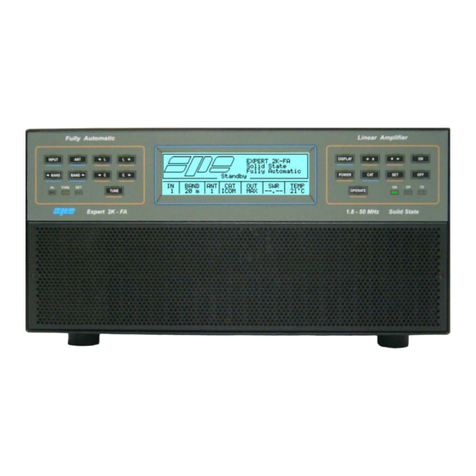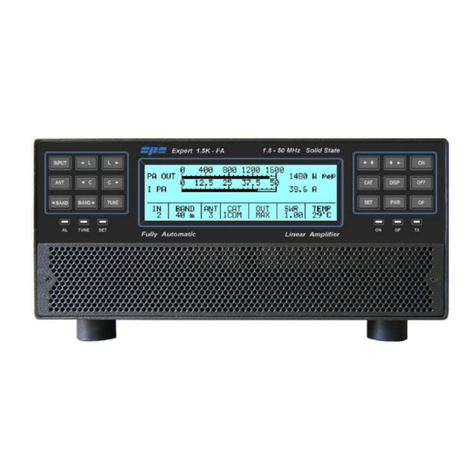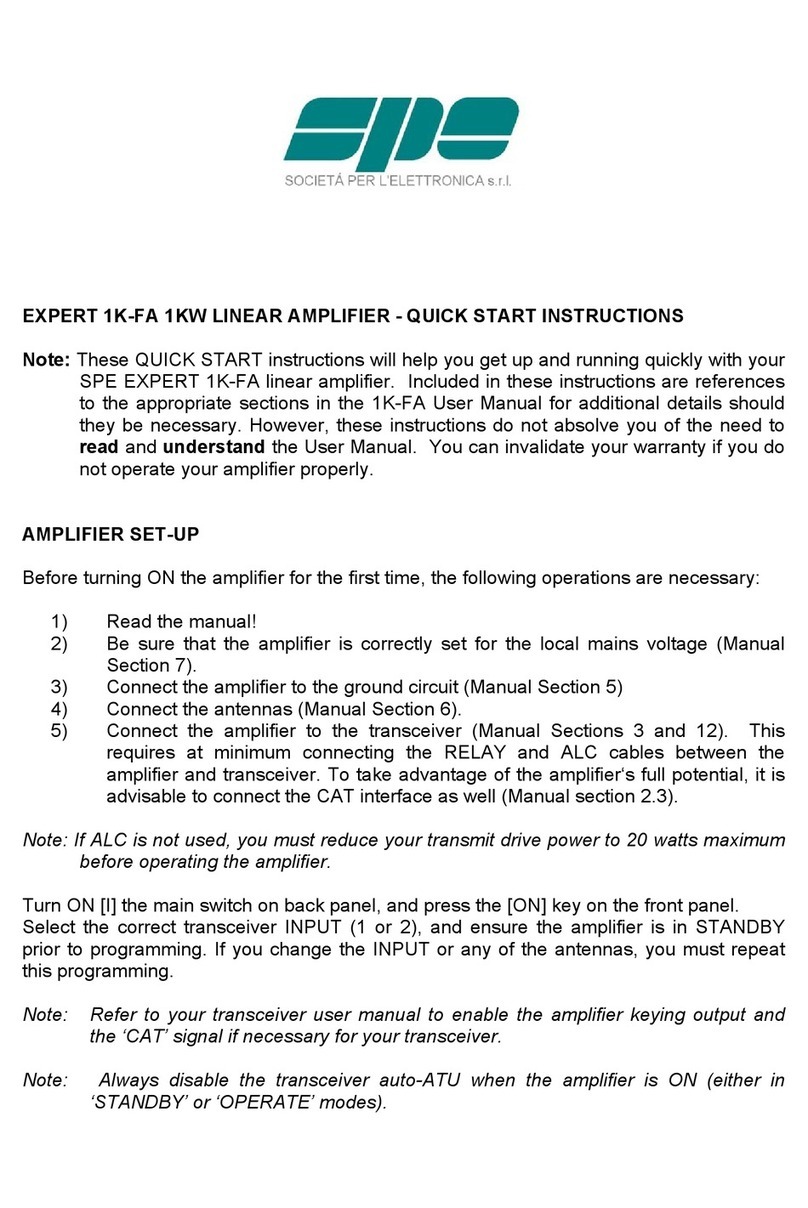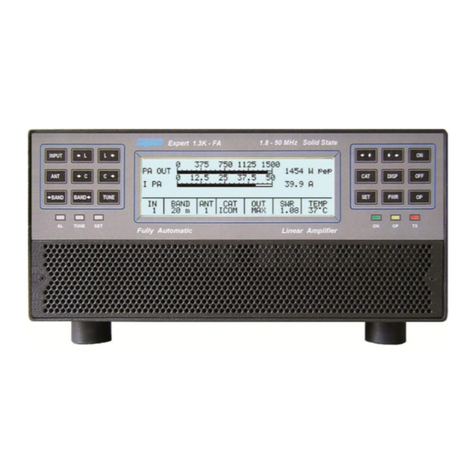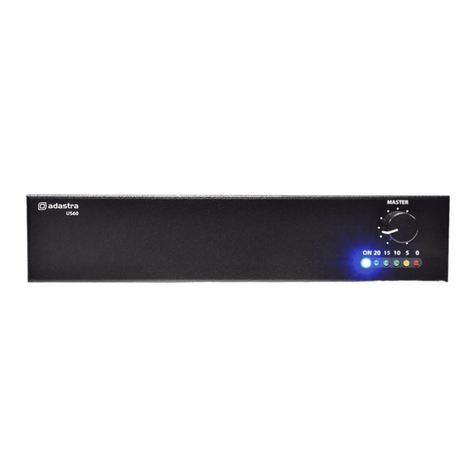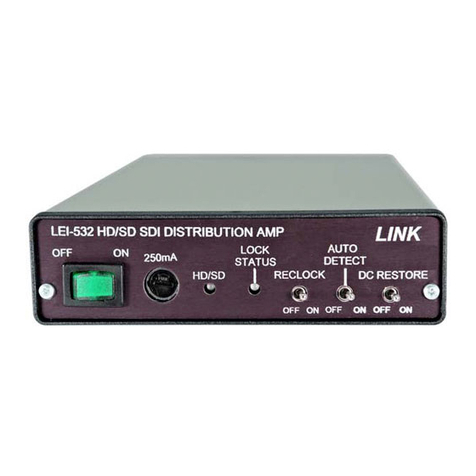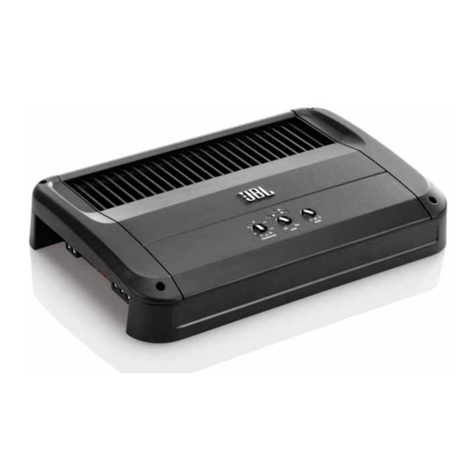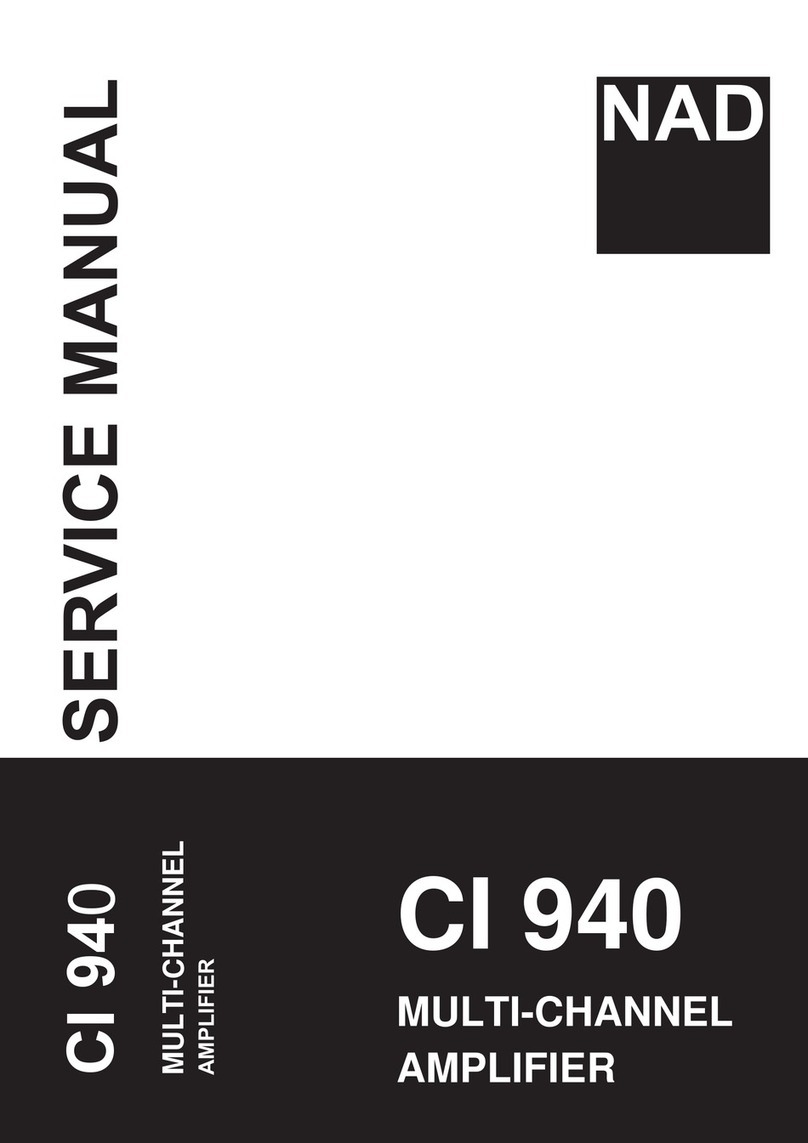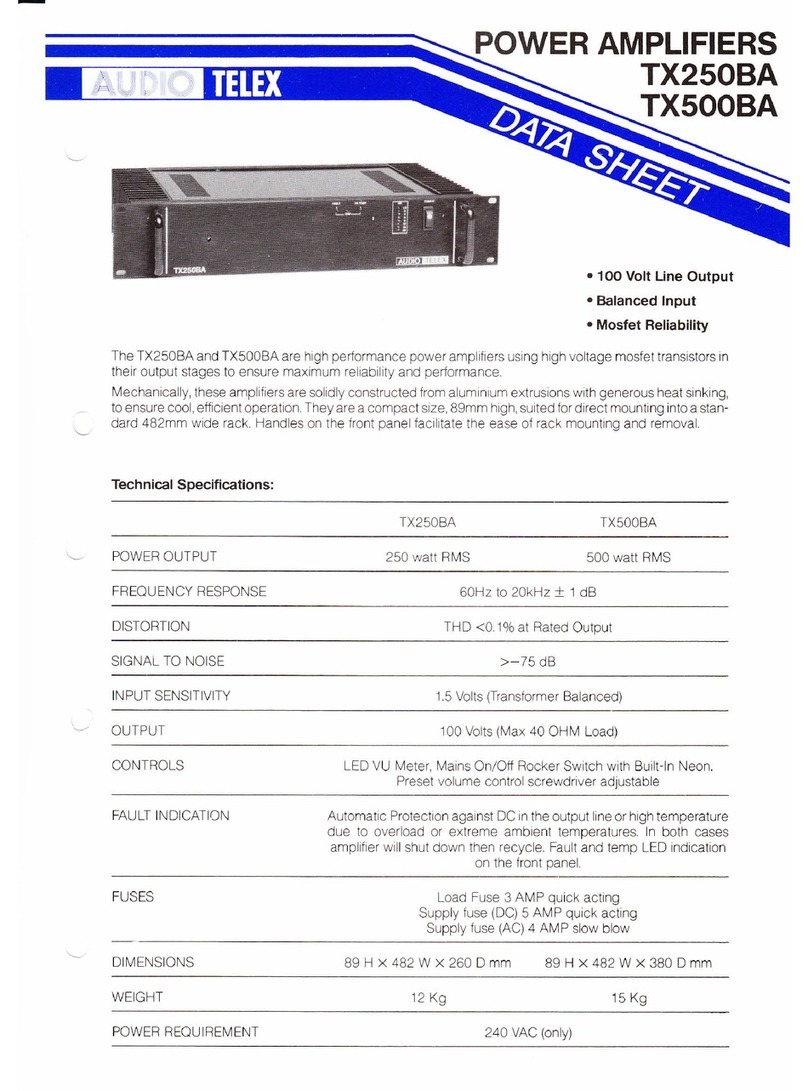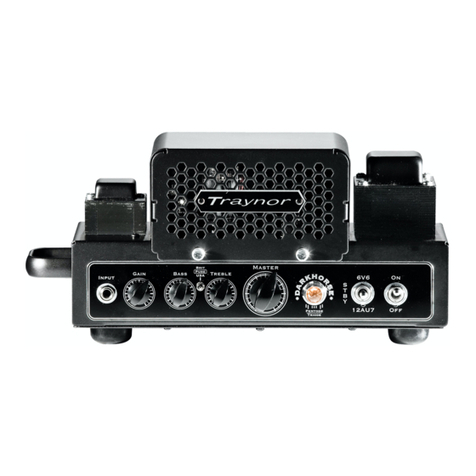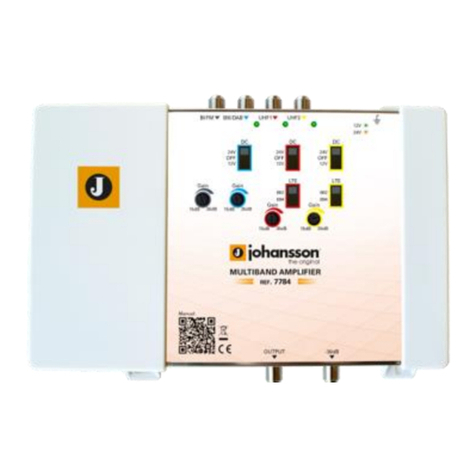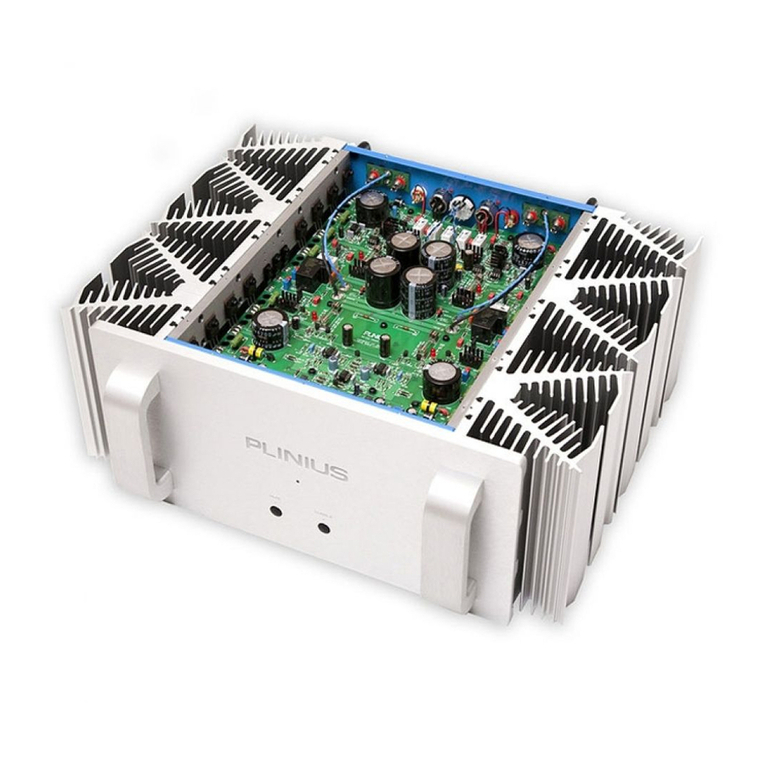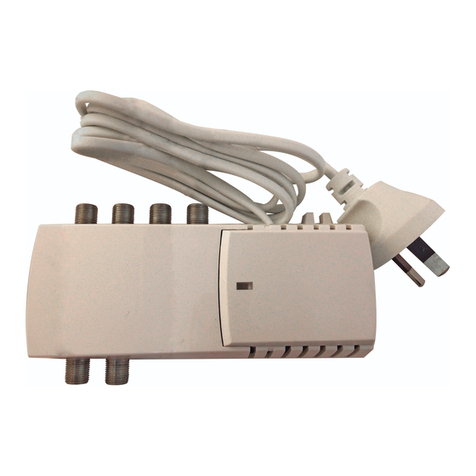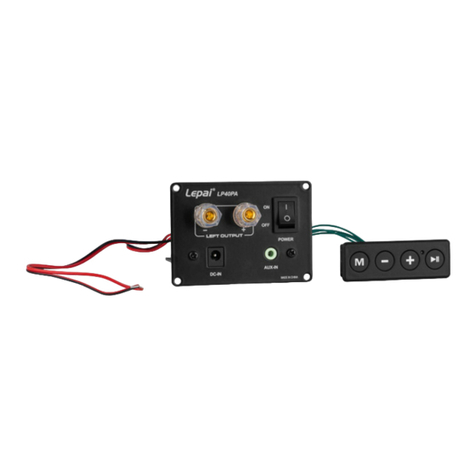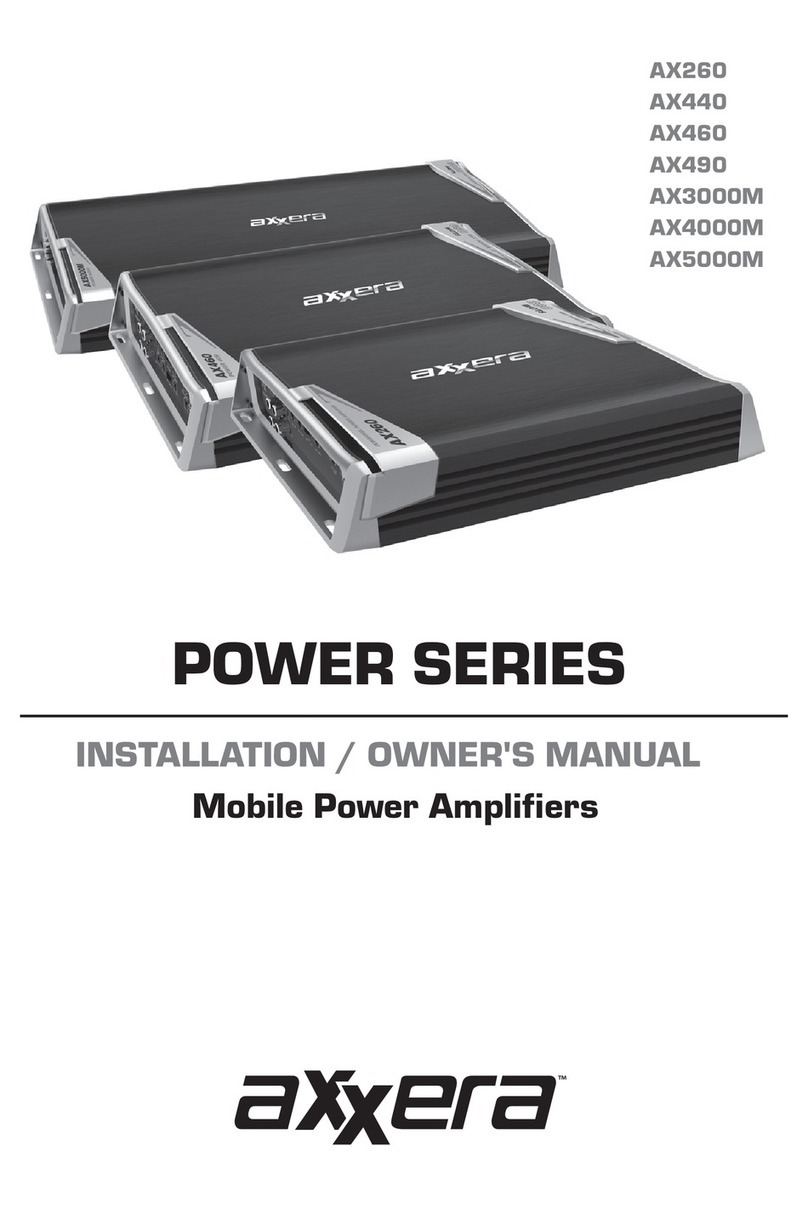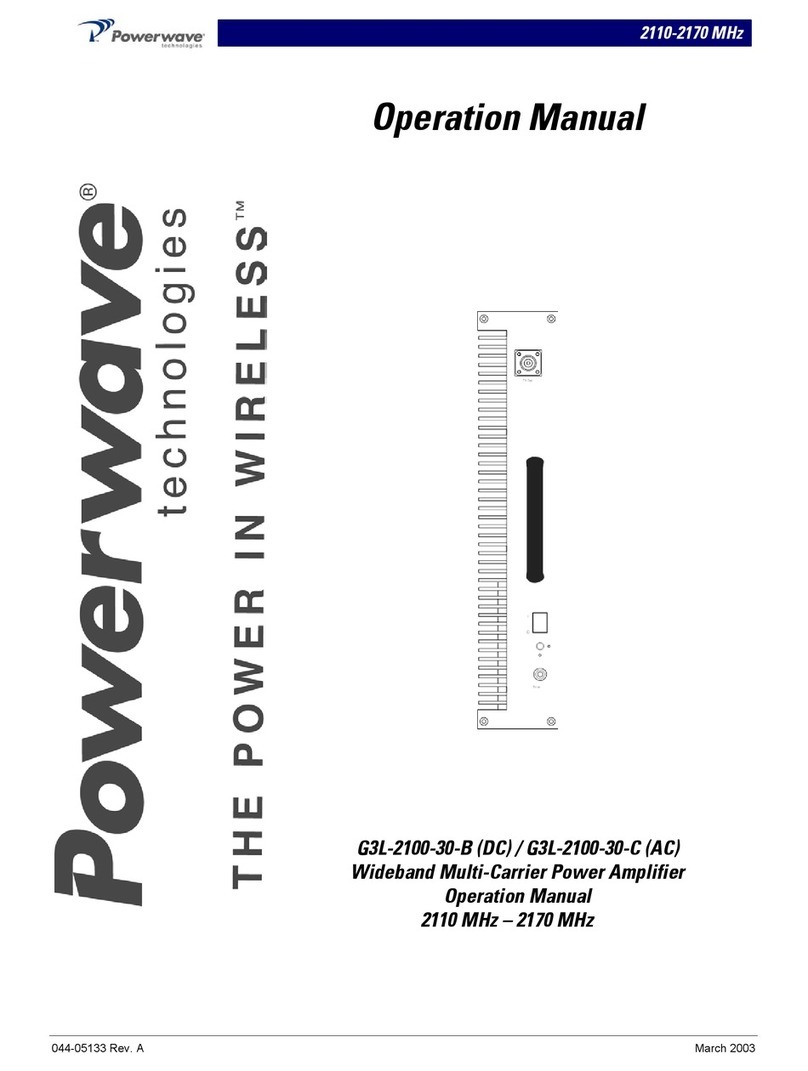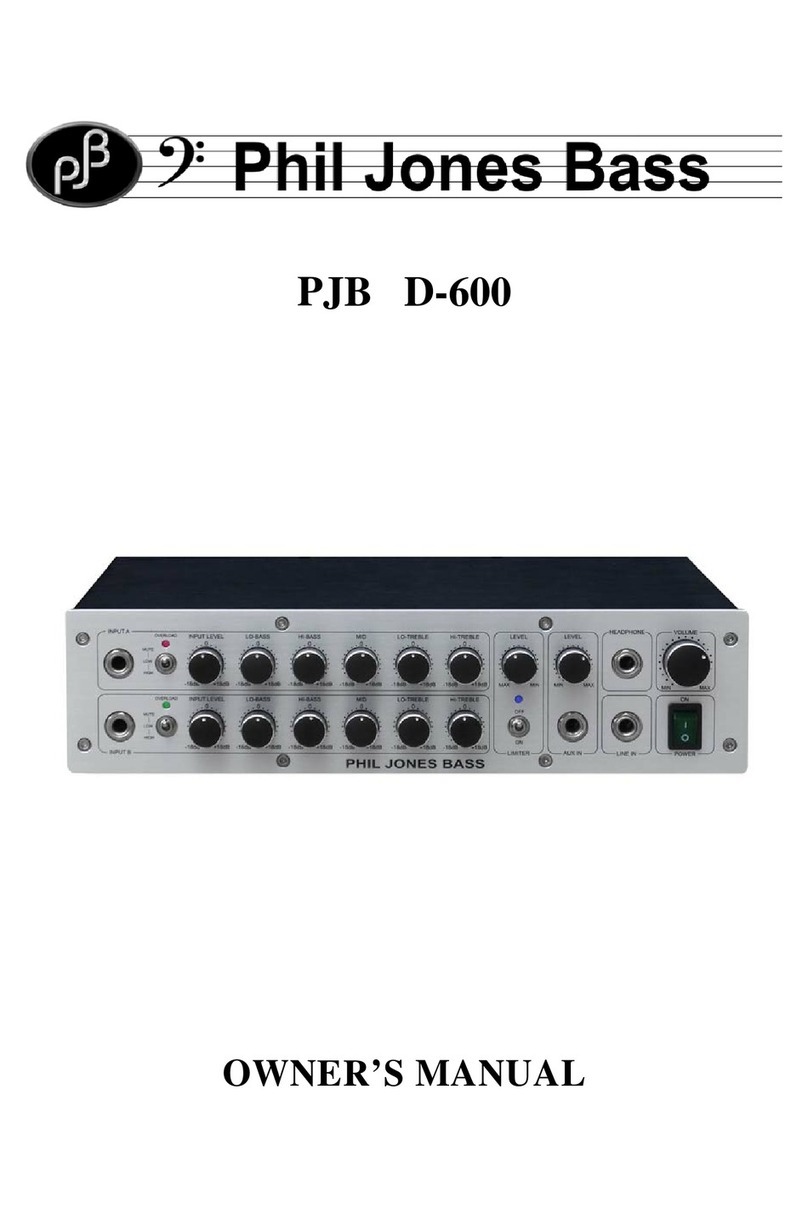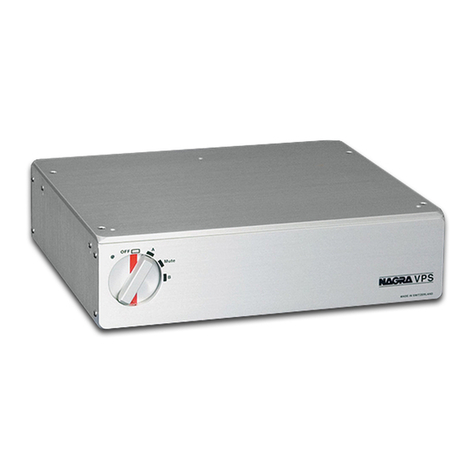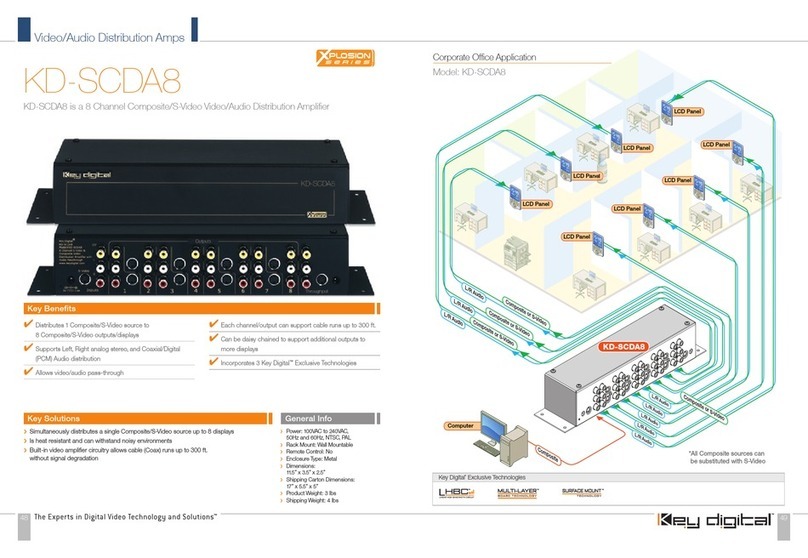SPE EXPERT 1K-FA User manual

EXPERT 1K-FA
1KW SOLID STATE FULLY AUTOMATIC
LINEAR AMPLIFIER
USER’S MANUAL
THIRD SERIES
CERTIFIED CE/FCC

User’s manual EXPERT 1K-FA
Pag. 2 of 76

User’s manual EXPERT 1K-FA
Pag. 3 of 76
Main index
IMPORTANT ......................................................................................................................................................5
PRECAUTIONS..................................................................................................................................................5
UNPACKING ......................................................................................................................................................8
1. PANEL DESCRIPTION ....................................................................................................................9
1.1 Front Panel .......................................................................................................................................9
1.2 Rear Panel......................................................................................................................................10
2. GENERAL INFORMATION ............................................................................................................11
2.1 Power supply ..................................................................................................................................11
2.2 Input / Output..................................................................................................................................11
2.3 ALC / RELAY / CAT........................................................................................................................11
3. INTERCONNECTION WITH THE TRANSCEIVER .......................................................................13
4. USE OF THE LINEAR AMPLIFIER................................................................................................14
4.1 SO2R (Single Operator Two Radio)..............................................................................................15
5. EXTERNAL GROUND CONNECTION ..........................................................................................16
6. ANTENNA.......................................................................................................................................16
7. POWER SUPPLY...........................................................................................................................17
7.1 Mains cable termination..................................................................................................................17
8. TUNER ...........................................................................................................................................20
9. PROTECTIONS / ALARMS............................................................................................................21
10. PROGRAMMING............................................................................................................................23
10.1 Ways to operate .............................................................................................................................23
11. INITIAL OPERATION OF THE AMPLIFIER...................................................................................26
11.1 Initial Programming.........................................................................................................................26
11.2 Operating........................................................................................................................................28
12. CAT CONNECTIONS.....................................................................................................................30
12.1 CAT Connector...............................................................................................................................30
12.2 SPE.................................................................................................................................................30
12.3 ICOM ..............................................................................................................................................31
CAT CI–V Interface ........................................................................................................................31
BAND CONTROL VOLTAGE Interface..........................................................................................31
12.4 KENWOOD.....................................................................................................................................32
CAT RS232 Interface .....................................................................................................................32
CAT 5V TTL Interface.....................................................................................................................32
12.5 YAESU............................................................................................................................................33
CAT RS232 Interface .....................................................................................................................33
CAT 5V TTL Interface.....................................................................................................................33
BAND DATA Interface ....................................................................................................................34
12.6 TEN–TEC, FlexRadio, ELECRAFT ................................................................................................34
CAT RS232 Interface .....................................................................................................................34
12.7 TRANSCEIVERS OF OTHER BRANDS........................................................................................35
13 OTHER CONNECTIONS ...............................................................................................................36
13.1 ALC, RELAY CONNECTIONS .......................................................................................................36
13.2 REMOTE ON LINK.........................................................................................................................36
13.3 TX INH LINK...................................................................................................................................37
14. TRANSCEIVER CONTROLLED WITH A PC.................................................................................38
14.1 ICOM CI-V INTERFACE................................................................................................................38
14.2 RS232 INTERFACE .......................................................................................................................39
14.3 5V TTL KENWOOD INTERFACE ..................................................................................................39
14.4 5V TTL YAESU INTERFACE .........................................................................................................40
15. USE OF THE RS-232 PORT..........................................................................................................41
16. MAINTENANCE .............................................................................................................................42
17. CHARACTERISTICS / SPECIFICATIONS ....................................................................................43

User’s manual EXPERT 1K-FA
Pag. 4 of 76
18. APPENDIX 1.................................................................................................................................. 45
18.1 Main Display Page (STANDBY Mode). ........................................................................................ 45
18.2 Main Display Page (TX Exciter).................................................................................................... 46
18.3 Alarm History Display Page.......................................................................................................... 47
18.4 Setup Options Menu. .................................................................................................................... 48
18.5 SET ANTENNA Menu................................................................................................................... 50
18.6 SET CAT Menu............................................................................................................................. 52
18.7 SPE CAT Settings ........................................................................................................................ 54
18.8 ICOM CAT Settings ...................................................................................................................... 54
18.9 KENWOOD, ELECRAFT CAT Settings........................................................................................ 55
18.10 YAESU CAT Settings ................................................................................................................... 55
18.11 TEN-TEC CAT Settings................................................................................................................ 56
18.12 FLEX-RADIO CAT Settings.......................................................................................................... 56
18.13 RS-232 CAT Settings ................................................................................................................... 57
18.14 NO CAT Settings .......................................................................................................................... 57
18.15 MANUAL TUNE Display Page...................................................................................................... 59
18.16 BACKLIGHT Display Page. .......................................................................................................... 61
18.17 CONTEST Settings....................................................................................................................... 62
18.18 BEEP Settings. ............................................................................................................................. 63
18.19 START Settings. ........................................................................................................................... 64
18.20 TEMP Settings.............................................................................................................................. 65
18.21 OPERATE Mode........................................................................................................................... 66
18.22 OPERATE Mode and FLEX-RADIO CAT interface...................................................................... 68
18.23 Diagnostics. .................................................................................................................................. 70
19. TABLE............................................................................................................................................ 72
20. WARRANTY .................................................................................................................................. 73
SPACE FOR THE REPAIRER ............................................................................................................................. 75

User’s manual EXPERT 1K-FA
Pag. 5 of 76
Congratulations for choosing the SPE EXPERT 1K-FA linear amplifier: It is small, and
powerful, it covers the whole frequency range from 1.8 to 54 MHz, completely
automatically. All operating conditions (frequency, antenna and tuner) may be controlled
from your transceiver. It is possible to connect it to every type of device, it is extremely
user-friendly, and offers a product which is best-in-class.
IMPORTANT
Read this instruction manual carefully before attempting to operate the linear
amplifier.
The warranty will be invalidated in the case of non-observance of these
instructions.
Keep this manual. It contains important safety and operating instructions for the
SPE EXPERT 1K-FA.
This manual may be subject to changes and updates therefore please refer
always to the updated version available on the website www.linear-amplifier.com.
If in doubt, refer to the interpretation in English version.
PRECAUTIONS
Explicit definitions
WORD DEFINITION
WARNING! Risk of danger of fire or electric shock to persons.
Possible damage to the amplifier.
NOTE: Serious problems if not observed. Danger of fire or electric shock for the operator, or
damage to the equipment.
WARNING!
HIGH VOLTAGE! DO NOT disconnect an antenna from the amplifier during
transmission; electric shock or fire is possible.
WARNING!
DO NOT modify the internal wiring of the amplifier. Any modifications will invalidate the
warranty, and may reduce the performance of the linear amplifier or damage it.
WARNING!
Before using the linear amplifier, compare the value of voltage of the local mains supply
network with the value required by the amplifier, and set it up correctly.
WARNING!
DO NOT turn ON the linear amplifier unless it has been properly grounded through the
green/yellow conductor of the mains cord. Your dealer will already have provided the
correct mains plug for your local electricity network, with the earth pin connected to that
conductor. Do not disconnect this under any circumstances, or there is a risk of severe
or fatal electric shock.
WARNING!

User’s manual EXPERT 1K-FA
Pag. 6 of 76
DO NOT use an extension cord with the AC power cable, as if it is not correctly rated
there is a risk of fire or electric shock.

User’s manual EXPERT 1K-FA
Pag. 7 of 76
WARNING!
DO NOT allow metallic objects or wires to enter inside the amplifier.
WARNING!
DO NOT obstruct the entries for cooling air at both the sides of the amplifier.
Ensure that no object impedes the correct operation of the fans.
WARNING!
DO NOT expose the linear amplifier to rain, snow or any liquids.
WARNING!
DO NOT instal the linear amplifier in a place without good ventilation. This could limit
heat dissipation and the amplifier could be damaged.
WARNING!
DO NOT touch the amplifier with damp or wet hands. There is danger of electric shock.
Avoid opening it before you have disconnected it from the mains supply, then wait at
least 2 minutes for electrolytic capacitors to complete their discharge.
To clean the amplifier DO NOT use chemical agents like alcohol or benzene because
the plastic surfaces could be damaged.
AVOID using the amplifier in areas with temperatures below –10° C (+14°F) or above
+40°C (+104°F).
AVOID using the linear amplifier in locations that are very dusty, damp or in direct
sunlight.
AVOID placing the linear amplifier against walls, the circulation of the air would be
obstructed and the noise of the fans would be reflected toward the operator.
AVOID permitting children to play with the amplifier.
If you do not use the linear amplifier for long time, set the back main switch [I/O] to the
OFF position [O].
This amplifier should only be operated by persons who have an appropriate radio
transmitting licence, and you should observe your licence conditions whilst
using it.

User’s manual EXPERT 1K-FA
Pag. 8 of 76
UNPACKING
Remove the packing and carefully check the contents.
If you find any damage or if there are any parts missing, contact your retailer
immediately.
Keep the shipping cartons for future transportation if required.
Accessories included in the carton
a) Transport carry bag.
b) 2 - cables with RCA (phono) connectors for ALC, RELAY links.
c) 1 - standard RS232 cable.
d) 2 -15 pole connectors (DB-15) for CAT links.
e) User manual.
f) Spare fuses:
1 - 12.5 A.
1 - 0,5 A.
1 - 20 A
1 - 20 A (USA and Japan only).
1 - 1 A. (USA and Japan only).
g) Spare air filter.
h) Certificate of compliance and warranty form.
b
c
d
e
a
h
f
g

User’s manual EXPERT 1K-FA
Pag. 9 of 76
1. PANEL DESCRIPTION
1.1 Front Panel
SET
CATANTBANDBANDINPUT
TUNEALL SET ON OP TX
12
3
4
5
25
1.8 -50 MHz Solid State
Fully Automatic Linear Amplifier
Expert 1K - FA
21 20 19
6
7813
11
10
9
222324 26
16
18
17
15
14
L
CC
L
TUNE
OFF ON
POWER
DISPLAY
OPERATE
12
1) ON
2) OFF
3) DISPLAY switches between display pages.
4) POWER switches output power from “FULL / HALF“ (1KW / 500 W).
5) OPERATE switches between Standby / Operate.
6) SET used to program the amplifier.
7) ▼► used to program the amplifier.
8) ◄▲ used to program the amplifier.
9) INPUT selects one of the two inputs of the amplifier.
10) ◄BAND switches bands manually (downward in frequency).
11) BAND►switches bands manually (upward in frequency).
12) ANT switches the antennas for every single band
13) CAT shows the current CAT interface setting.
14) TUNE: starts the automatic tuning process.
15) ◄C used for manual tuning.
16) C►used for manual tuning.
17) ◄L used for manual tuning.
18) L►used for manual tuning.
19) TX red led, illuminates during transmission.
20) OP yellow led, illuminates when the amplifier is in “Operate” state.
21) ON green led, illuminates when the amplifier is “ON”.
22) SET green led, illuminates during programming.
23) TUNE yellow led, illuminates during tuning.
24) ALL red led, illuminates when there is an alarm.
25) DISPLAY
26) AIRFLOW GRID

User’s manual EXPERT 1K-FA
Pag. 10 of 76
1.2 Rear Panel
ANT 1
FUSE 2FUSE 1AC
IN 1
RELAYCAT ALC CAT ALCRELAY RS232
ON
ANT 2 ANT 4ANT 3 INPUT 1 INPUT 2
IN 2
1
I
SO2R
2
O
11
12
10
9867
5
4
3
1) ANT connectors for four possible antennas.
2) SO2R connector for SO2R operations
3) INPUT connectors to connect two exciters.
4) FANS
5) RS 232 CONNECTOR
6) IN 1 ALC, RELAY, CAT connectors for exciter 1.
7) IN 2 ALC, RELAY, CAT connectors for exciter 2.
8) FUSE 2 fuse for the power supply; PA unit 12.5A (230, 215, 200 Vac),
20A (115, 100 Vac).
9) FUSE 1 fuse for the power supply; electronic unit 0.5A (230, 215, 200 Vac),
1A (115, 100 Vac ).
10) AC mains power cable.
11) GND ground connector.
12) ON main switch.

User’s manual EXPERT 1K-FA
Pag. 11 of 76
2. GENERAL INFORMATION
(Read the specific chapters for more details).
2.1 Power supply
The amplifier’s power supply is 230, 215, 200, 115, 100 Vac (230 Vac default).
The main switch [I/O] is located on the rear panel, in the [O] position all the internal
circuitry is powered off, in the [I] position (red led ON) it is possibile turn ON or turn OFF
the linear amplifier in one of the following ways:
a) Using the [ON]/[ OFF] keys on the front panel.
b) Applying / removing 9 -15 Vdc on pin (8) of the CAT connector.
c) Using the RS232 port and the management software. It is possible to
download this software from the website www.linear-amplifier.com .
Note: when turned ON, almost all transceivers output 13,8 Vdc. With this voltage, the linear
amplifier can be turned automatically ON / OFF at the same time as the transceiver.
2.2 Input / Output
The linear amplifier has two inputs (INPUT 1, INPUT 2) to which it is possible to connect
two transceivers of any brand or type. These inputs are selected with the [INPUT] key.
It can manage up to four antennas (ANT 1, ANT 2, ANT 3, ANT 4).
The amplifier selects antennas automatically when they have been programmed.
The SO2R functionality is implemented using its proper connector.
2.3 ALC / RELAY / CAT
There are two transceiver inputs (IN 1, IN 2), to allow two different transceivers to be
connected at the same time.
ALC Is a voltage (0, -11 Vcc) generated by the amplifier, it is used to control the
output power of the transceiver. In this way the power from the amplifier may
be automatically controlled. This link is recommended.
If the ALC port is not connected, it is ncessary to manually regulate the drive
power from the transceiver.
RELAY This essential link allows the amplifier to be put in the transmit state. To do
that it is necessary that the inner pin of the phono connector is connected to
signal ground. This is normally done at the transceiver with either a close on
ground relay, or with a switching transistor. It is important that the voltages at
that terminal do not exceed 12 Vdc. On the transceiver this link is often called
SEND or TX GND. Refer to your transceiver manual for more details.
CAT Thanks to this link the linear amplifier will detect the operating frequency of
the transceiver and then automatically control changes of band, antenna and
automatic antenna tuner. Most modern tranceivers have CAT control. In old
models often, analog or digital information are sent for changing band. The
SPE Expert 1K-FA, thanks to an efficient frequency counter, constantly

User’s manual EXPERT 1K-FA
Pag. 12 of 76
controls and verifies data coming from the transceiver. Automatic
management of bands, antennas and tuner can be done in the following way:
a) In all recent transceivers through CAT connection.
b) In the older ICOM models, through “BAND CONTROL VOLTAGE”.
c) In the YAESU models not listed, or without CAT, through "BAND
DATA".
d) In every other case through the internal frequency counter.
Note: in case d) the CAT link with the transceiver is not needed because the
frequency is detected from the transmitted signal.
Note: in some transceivers the “RELAY” and “CAT” signals are activated by
menu selection: refer in this case to their proper user’s manuals.

User’s manual EXPERT 1K-FA
Pag. 13 of 76
3. INTERCONNECTION WITH THE TRANSCEIVER
ANT 1
FUSE 2FUSE 1AC RELAYCAT ALC CAT ALCRELAY RS232
ANT 2 ANT 4ANT 3 INPUT 1 INPUT 2
ALC RELAY GND
TRANSCIEVER
GND
IN 21
CAT
SO2R
ON
I
O
ANTENNAS
SEE MANUAL
MULTIBAND
The diagram shows the connections with one transceiver only.To connect the second
transceiver repeat the same connections using the port “IN 2“.
For the ALC, RELAY connections, use the shielded cable (furnished) with phono RCA
connectors.
For the CAT connection, the cable must be made for the transceiver to be connected.
This cable may also be made to include ALC, RELAY ON / OFF (read the “CAT
CONNECTIONS“ chapter of this manual).
For all other information about connecting a transceiver, please refer to its manual.

User’s manual EXPERT 1K-FA
Pag. 14 of 76
4. USE OF THE LINEAR AMPLIFIER
TUNER
ANT 1
ANT 2
ANT 3
ANT 4
INPUT 1
INPUT 2
AMPLIFIER
ALC RS 232CAT RELAY ALCCAT RELAY
IN 1 IN 2
SO2R
The position of the contacts, as shown in the diagram, is the situation of the linear
amplifier in OFF state.
The linear amplifier can be used in the following ways:
1) OFF Only two direct connections are actuated:
between INPUT 1 and ANT 1
between INPUT 2 and SO2R
2) STANDBY All the functions are activated (band change, antenna change, tuner
control) but the transmission is from the transceiver only.
3) OPERATE All the functions are activated and the transmission is using the
linear amplifier.
Note: regulation of the exciter’s power is automatic through the ALC connection. With the
ALC connected, the amplifier input power in OPERATE mode is reduced to the correct
level to drive the amplifier. In standby, the exciter will give the output power as set by
its POWER OUTPUT control. Without the connection, you have to manually regulate
the exciter power to drive the amplifier correctly.
Note: for continuous duty cycle transmissions (RTTY, PSKxx, SSTV, FM, AM etc.) we
recommend switching the power to “HALF“ state.

User’s manual EXPERT 1K-FA
Pag. 15 of 76
4.1 SO2R (Single Operator Two Radio)
This kind of operation is used during a contest in order to acquire, as more quickly as
possible, a new multiplier.
The following connections are needed (see the diagram):
1. INPUT 1 connected to the first transceiver (RTX1).
2. INPUT 2 connected to the second transceiver (RTX2).
3. ANT 1/2/3/4 connected to the available antennas set.
4. SO2R connected to a multi-band antenna.
The operating mode could be the following:
If you are operating using RTX1 on a given band (e.g 20 m), the correct antenna
(ANT 1/2/3/4) is automatically selected while RTX2 is connected to the multi-band
antenna in RX mode on another band.
If, when operating on 20 m, a multiplier of interest is heard on RTX2 (e.g 40 m), the only
action needed is to push the PTT2 in order to RTX2 to the 40 m antenna, while RTX1
will be switched to the multiband antenna in order to receive the 20 m band.
Note: the isolation between the transmitting antennas and the receiving antenna must be very
high and, therefore, very well planned. Locating the antennas at some distance from
each other, and using appropriate band-pass filters will help to achieve this.
SPE cannot be responsible for any damage caused to equipment by using this mode of
operating.

User’s manual EXPERT 1K-FA
Pag. 16 of 76
5. EXTERNAL GROUND CONNECTION
WARNING! Before connecting an external ground as described below, check
with a qualified electrician that your national wiring codes permit such a
connection.
To reduce TVI, BCI and other RF problems it is sometimes helpful to connect the
amplifier to a good RF ground.
The inductance of such a connection has to be low, so the connection to ground should
be as short and direct as possible. Large-section copper conductors should be used for
this purpose. Terminating the earth connection with a small metal plate is suggested.
The best solution is to have a ground stake, driven into the ground, and used only for
the radio station.
Often good results can be acheived using correct earthing clamps, connected to the
mains water supply pipe (attention, most water pipes are now in plastic).
DO NOT use central heating pipework.
AVOID the electric circuit ground of the building (to be used for the 50/60 Hz safety
only).
WARNING! DO NOT connect to gas pipes because there is danger of explosion !!
6. ANTENNA
Because this is a high-power amplifier, it is necessary to use correctly-rated antennas
and feedline cables.
Take special care with antennas with traps, because trap warming can occur during
periods of high-power transmission and a high SWR can result.
Always use antennas with SWR less than 1,6:1, even if the tuner is able to overcome
some mismatches greater than 3:1.
With the tuner the PA is matched, but with a high VSWR, the cable is mismatched and
there can be consequent loss of power, heating and high voltages present.
Always operate with the best possible matching because, despite the amplifier’s
protection against high SWR, continuous use into a mismatched load (a bit lower than
the protection threshold) may lead to damage.
It is suggested that suitable static protection be given to antenna feeder cables.

User’s manual EXPERT 1K-FA
Pag. 17 of 76
7. POWER SUPPLY
The power supply unit of the SPE Expert 1K-FA has two blocks with two separate
power transformers.
The first block has regulated and protected voltages, and powers all the electronic
circuits for command and control.
The second block powers only the PA. It has a toroidal transformer with a low magnetic
field to avoid disturbances to nearby equipment. The output voltages are 44 Vdc (on
FULL-power mode) and 30 Vdc (on HALF-power mode), regulated with SCRs that also
provide ‘soft start’ on switch-on.
This design was adopted as it provides maximum efficiency and therefore less heat to
dissipate.
7.1 Mains cable termination
Your dealer will ensure that a mains plug appropriate for the country of use is fitted.
If the amplifier is used in a country other than that of the original purchase, refer to your
dealer for assistance.
The default mains voltage supply of the amplifier is 230 Vac (210-250 Vac).
It may be set to 215, 200, 115 and 100 Vac also.
To change the operating voltage see below:
WARNING! - REMOVE THE MAINS CORD FROM THE WALL SOCKET AND
WAIT AT LEAST 2 MINUTES FOR CAPACITORS TO DISCHARGE.
Only then, remove the bottom cover, the plastic protection and connect following the
diagrams below:
blue (white)
green/yellow (green)
brown (black)
The green / yellow wire from AC power cable must be
connected to the ground wire.
The blue and brown wires from the AC power cable
can be connected to either terminal.
The green / yellow wire from AC power cable must be
connected to the ground wire.
The blue wire from AC power cable must be
connected to the hot (live) wire.
The brown wire from AC power cable must be
connected to the return wire.
Single-phase 3-wire line (210-250 VA
C
Single-phase 2-wire line (105-125 VAC)
blue (white)
green/yellow (green)
brown (black)

User’s manual EXPERT 1K-FA
Pag. 18 of 76
230 VAC
blue
blue
black
white
brown
brown
red
brown
brown
white
black
orange
blue
blue
black
50 W
TRANSFORME
R
1 KW
TRANSFORMER
215 VAC
50 W
TRANSFORME
R
blue
black
white
blue
black
blue
orange
black
red
brown
1 KW
TRANSFORME
R
blue
brown
brown
brown
white
200 VA
C
blue
black
50 W
TRANSFORME
R
1 KW
TRANSFORME
R
blue
white
brown
brown
brown
red
brown
white
black
orange
blue
blue
black
115 VAC
blue
blue
black
white
brown
white
red
orange
blue
blue
black
black
brown
brown
brown
50 W
TRANSFORMER 1 KW
TRANSFORME
R
100 VAC
white
brown
brown
blue
blue
black
blue
black
white
red
brown
brown
blue
black
orange
50 W
TRANSFORME
R
1 KW
TRANSFORME
R

User’s manual EXPERT 1K-FA
Pag. 19 of 76
After checking your wiring, re-install the plastic protection, the bottom cover and make
sure that, when using 115 and 100 Vac, in “Fuse 1” there is a 1A fuse and in “Fuse 2”
there is a 20A fuse (included in the packaging).
Mark the voltage change on the back panel.

User’s manual EXPERT 1K-FA
Pag. 20 of 76
8. TUNER
The amplifier has an automatic tuner that handles load mismatches up to 3:1 VSWR
(2.5:1 for 6 m).
The circuit used is a PI – L network with excellent harmonic suppression.
The amplifier contains a look-up table with all the permitted bands.
For tuner management, antenna data and other working data are stored.
Every band has a sub-band set, and for each of those, data related to the antenna and
auto-ATU tuning is stored.
The CAT and the frequency counter detect the operating frequency and the correct
sub-band. Thanks to the stored data, the tuner and the antenna are automatically set
correctly.
For every input there is a different table. If two exciters are connected at the same time,
each exciter can have different configurations.
It is possible to use the two different tables when the amplifier operates at two different
locations. In fact it is possible to use the INPUT 1 at one and INPUT 2 on the other. In
this way repeated reprogrammings are not needed
Furthermore, table driven management is useful to inhibit operation of the amplifier, for
instance when an antenna for a particular band is not available.
All auto-tuner functions remain, on standby, whilst using the transceiver only.
Setting of the match data to write to the tables is performed automatically by pressing
the [TUNE] key The system will then find the correct match for minimum SWR.
To achieve a better match than that achieved with the automatic tune routine (most
unlikely) it is possible to set the tuning manually by using the keys [◄C], [C►], [◄L],
[L►].
When manual tuning has been performed, it is possible to read the tuning value, the
working frequency and the associated sub-band on the appropriate screen page.
Both the types of tuning are always effected in “STANDBY“ state.
Note: the tuner, like all analog circuits, introduces a loss (0,8 dB max.) that may vary with
tuning conditions.The power meter of the amplifier does not show this loss as the
power is measured at the tuner input where the load resistance is always constant
(50 ohm).
Note: ATTENTION: When the amplifier is either in “STANDBY” or “OPERATE” mode, always
disable the automatic tuner in your transceiver.
Note: ATTENTION: As two different tables are used for INPUT1 and INPUT2, it is necessary
to make separate matching, for the same antenna, depending on the used input.
Ignoring this caution could make the amplifier work for a long period with a high SWR
and this practice could seriously damage the amplifier even if the protection level is not
exceeded.
Other manuals for EXPERT 1K-FA
2
Table of contents
Other SPE Amplifier manuals

